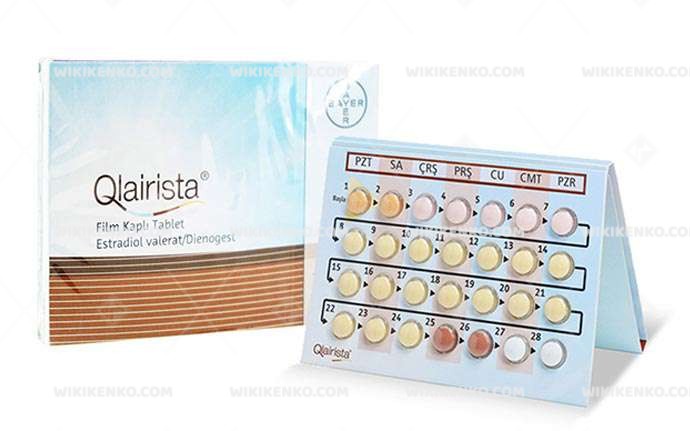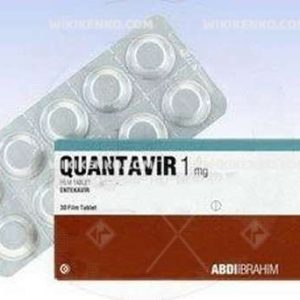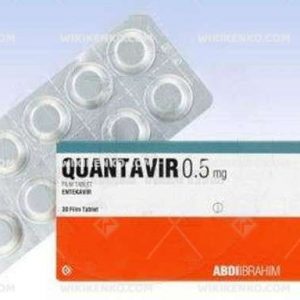Qlairista Film Coated Tablet
In the domain of pharmaceuticals, Qlairista takes center stage as a vital oral contraceptive. This comprehensive guide delves into the intricacies, elucidating its composition, applications, potential side effects, effectiveness, suitability, and interactions with other medications.
| Dosage form | |
|---|---|
| Pack size | |
| Potency | Combined |
| Manufacturer | |
| Origin | |
| Generic Name (Ingredient) | Combined |
Assuming your emergency circumstances for this product, visit Urgent Quotation page. Besides, for any pharmaceutical questions, please ask us in the comments section.
Description
Ingredients
Qlairista is a film-coated tablet brimming with significance, boasting two active ingredients: Estradiol valerate and Dienogest. These components play pivotal roles in its contraceptive prowess.
An Insight into Qlairista’s Packaging
Each Qlairista wallet houses 28 film-coated tablets, comprising 26 hormone-containing tablets and 2 hormone-free tablets. The hormone-containing tablets are thoughtfully organized as follows:
1. Dark Yellow Tablets
- Each contains 3 mg of estradiol valerate.
2. Medium Red Tablets
- Each contains 2 mg of estradiol valerate.
- Each also contains 2 mg of dienogest.
3. Light Yellow Tablets
- Each contains 2 mg of estradiol valerate.
- Each also contains 3 mg of dienogest.
4. Dark Red Tablets
- Each contains 1 mg of estradiol valerate.
The hormone-free tablets are a pristine white. Beyond the active components, Qlairista tablets contain excipients that aid in formulation. These excipients differ between the active and placebo tablets, encompassing lactose monohydrate, maize starch, pregelatinized maize starch, povidone 25, magnesium stearate, hypromellose, talc, titanium dioxide (E171, CI 77891), ferric oxide yellow (E172, CI 77492), and/or ferric oxide red (E172, CI 77491).
Instructions
Before embarking on a Qlairista regimen, it is paramount to meticulously peruse the provided instructions. These instructions house vital information for the user. Any questions or concerns regarding it should be promptly directed to a healthcare provider. It’s crucial to remember that this medication is intended solely for personal use and should not be shared with others. Additionally, when seeking medical attention while using it, ensure that healthcare providers are informed of your Qlairista regimen.
Side Effects
As with any medication, Qlairista is not without the possibility of side effects. The most commonly reported side effects include headaches, nausea, breast tenderness, breakthrough bleeding, spotting, and missed periods, particularly in the initial months of use. These side effects are generally transient. However, if they persist, consulting a healthcare provider is advisable.
Rare side effects associated with Qlairista encompass thrush, back pain, contact lens intolerance, anxiety or aggression, pins and needles, allergic reactions, urinary tract pain, dry mouth, constipation, or breast discharge. While these occurrences are infrequent, it’s imperative to seek medical advice if they manifest.
It’s essential to recognize that not everyone will experience side effects when taking Qlairista. Many women may not encounter any side effects at all. Should concerns regarding potential side effects arise, consulting a healthcare provider or pharmacist is an excellent course of action.
Qlairista’s Effectiveness
Qlairista, when administered correctly, boasts over 99% effectiveness in preventing pregnancy. However, this effectiveness can be compromised by factors such as missed pills, vomiting, diarrhea, and the concurrent use of certain medications. Adhering to instructions diligently is crucial.
Commencing it on the first day of menstruation renders it immediately effective. In cases where initiation occurs at other points in the menstrual cycle, an additional method of contraception, such as condoms, should be employed during the initial seven days of pill consumption.
Determining Suitability
While Qlairista is a widely prescribed contraceptive, it may not be suitable for everyone. Notably, it is generally recommended for young women without significant health issues. However, caution is exercised, as it is discouraged for individuals at an elevated risk of developing blood clots, particularly women over the age of 35 who smoke.
Therefore, consulting a healthcare provider is pivotal before commencing a Qlairista regimen. Healthcare providers evaluate medical history and concomitant medications to determine its suitability as a contraceptive option.
Interactions with Other Medications
Though generally safe, Qlairista may interact with specific medications, potentially diminishing its efficacy or increasing the likelihood of side effects. Medications that may interact with it include certain antibiotics, antifungal medications, anti-epileptic drugs, and herbal remedies like St. John’s Wort.
Individuals taking any of these medications or other drugs should inform their healthcare provider before commencing Qlairista. Healthcare providers can offer guidance on the safety of combining it with other medications and suggest alternative contraceptive methods when necessary.
Conclusion
In conclusion, Qlairista stands as a significant contraceptive option, featuring a meticulous combination of active ingredients. Its effectiveness and suitability depend on adherence to instructions and individual health factors. Awareness of potential side effects and interactions with other medications is essential for responsible usage.
When wielded knowledgeably and in consultation with healthcare providers, it serves as a valuable tool in family planning and reproductive health.
Use the form below to report an error
Please answer the questions as thoroughly and accurately as possible. Your answers will help us better understand what kind of mistakes happen, why and where they happen, and in the end the purpose is to build a better archive to guide researchers and professionals around the world.
The information on this page is not intended to be a substitute for professional medical advice, diagnosis, or treatment. always seek the advice for your physician or another qualified health provider with any questions you may have regarding a medical condition. Always remember to
- Ask your own doctor for medical advice.
- Names, brands, and dosage may differ between countries.
- When not feeling well, or experiencing side effects always contact your own doctor.
Cyberchondria
The truth is that when we’re sick, or worried about getting sick, the internet won’t help.
According to Wikipedia, cyberchondria is a mental disorder consisting in the desire to independently make a diagnosis based on the symptoms of diseases described on Internet sites.
Why you can't look for symptoms on the Internet
If diagnoses could be made simply from a textbook or an article on a website, we would all be doctors and treat ourselves. Nothing can replace the experience and knowledge of specially trained people. As in any field, in medicine there are unscrupulous specialists, differences of opinion, inaccurate diagnoses and incorrect test results.






Reviews
There are no reviews yet.